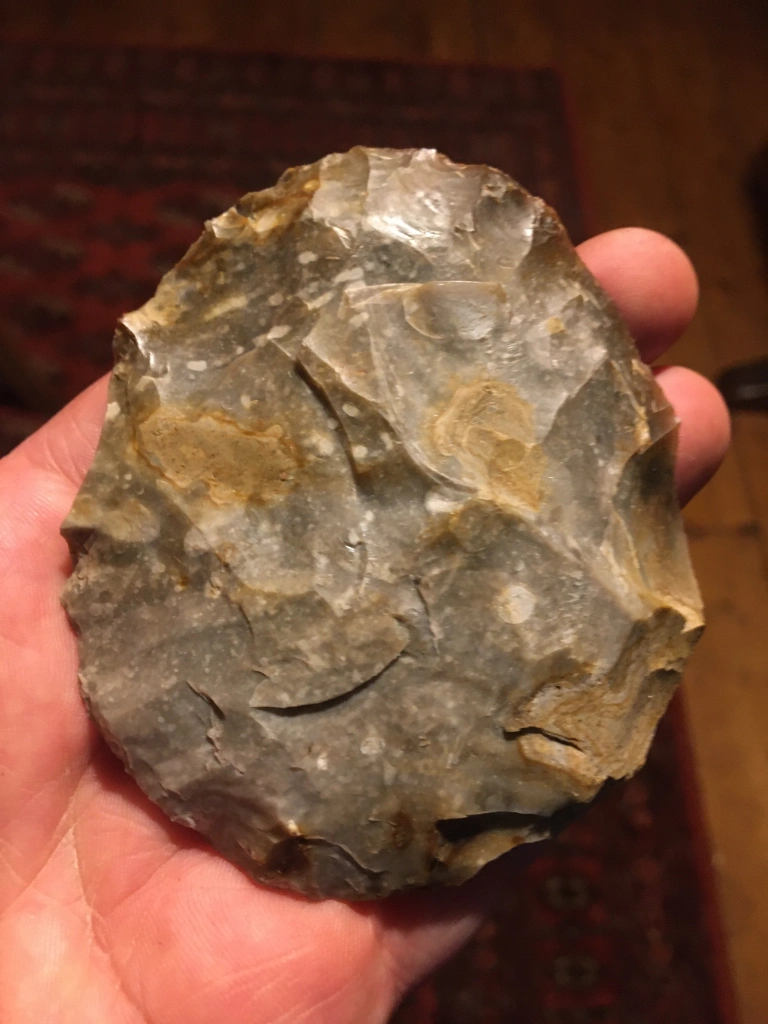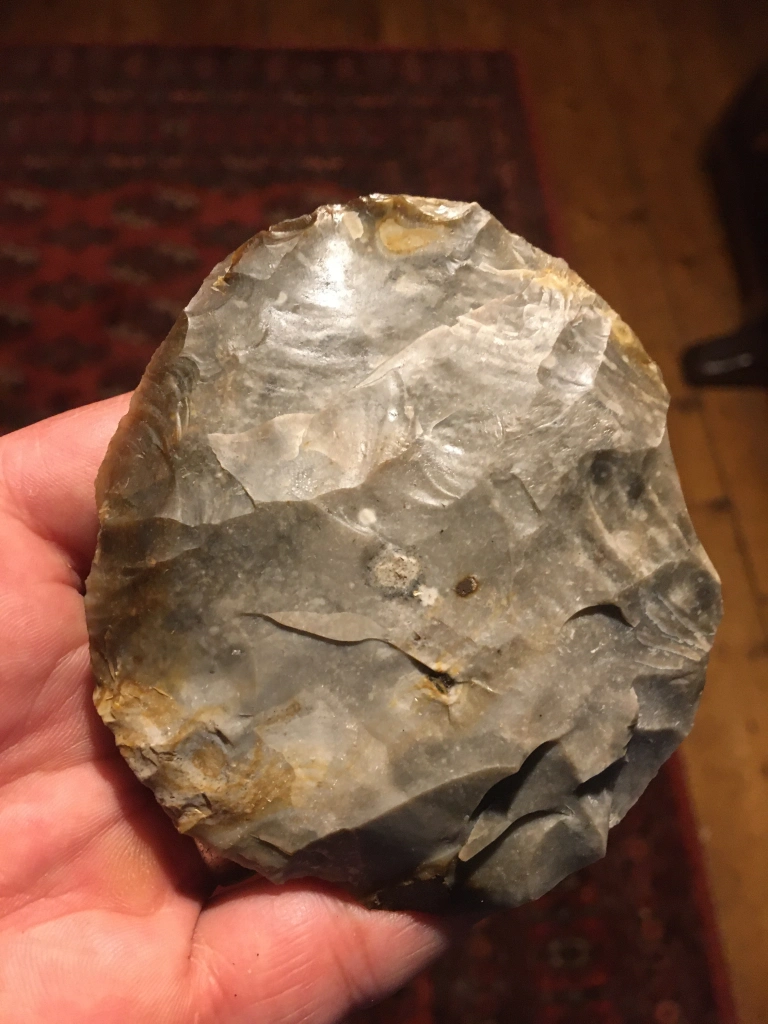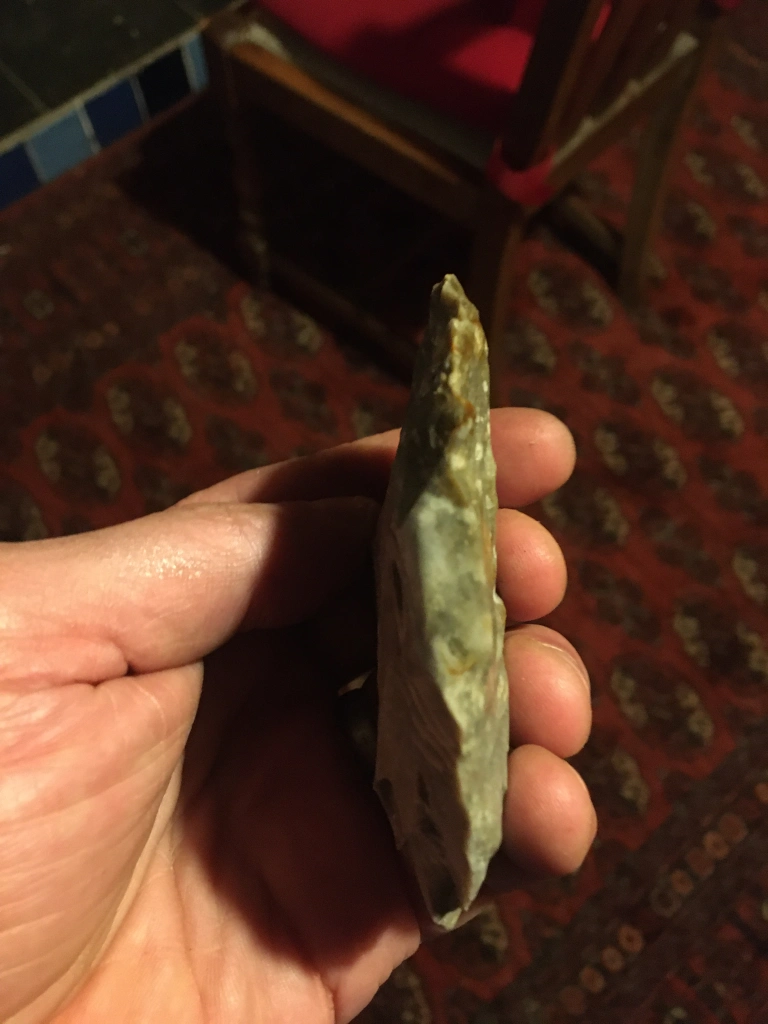
Thanks to Alice la Porta we now have the best part of a tonne of flint nodules in the Teaching Lab. Thank you Alice! Earlier this afternoon I went to a talk by Julian Thomas about excavations at the early Neolithic site of Dorstone Hill in Herefordshire. Of particular interest was the pattern of rock crystal deposition. Whilst flint was found across the site, rock crystal was almost exclusively associated with cremated remains.

And whilst present in the form of very small pieces of debitage, no rock crystal tools were recovered, and the small size of the debitage suggests none were produced. The process of reduction seems to have been the thing. This is in stark contrast to the typological focus of modern archaeology discussed in Grace’s previous post.

Anyway, at about 5.30pm I found myself in the lab with a large hammer stone reducing a large nodule into manageable flakes. I have posted some pics of one of the handaxes made, but to reiterate, the process is the thing. I like the handaxe but I stole the 50 minutes or so of the day when I could be alone in the lab making something. Why is this process so precious?